Melasma Pigmentation
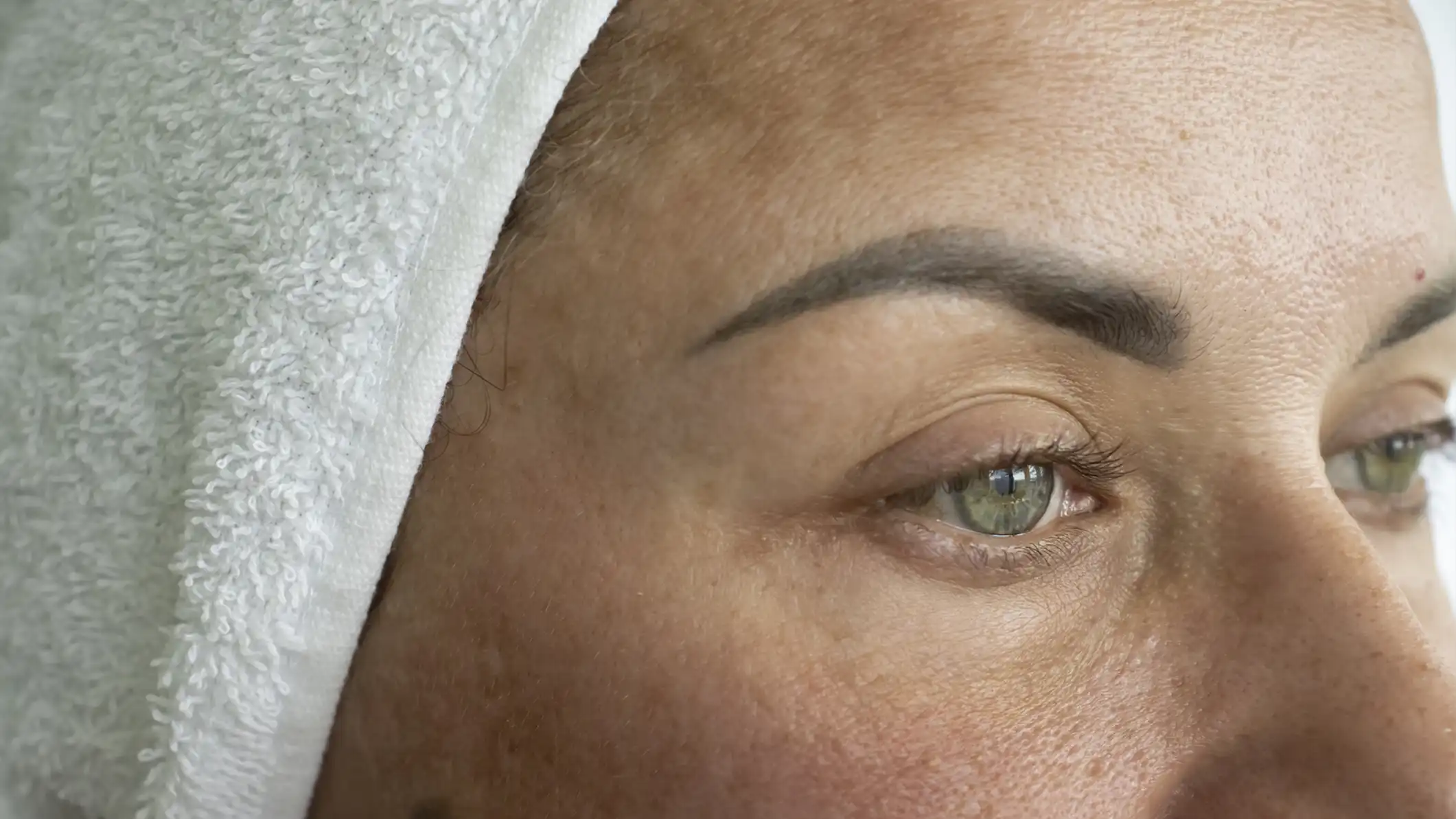
Background
Melasma is an acquired disorder of hyperpigmentation typically affecting sun-exposed areas of the skin (especially the face). The condition is more common in women with darker skin complexion (including those of Hispanic and Asian descent). Melasma rarely occurs before puberty, with onset most often in the reproductive years. It has also been rarely reported in males.
Melasma is characterized by irregularly bordered, evenly pigmented tan macules on the face. Darker macules may sometimes be seen (“dermal melasma”). The pathophysiology of melasma is poorly understood and complicated.
Causes
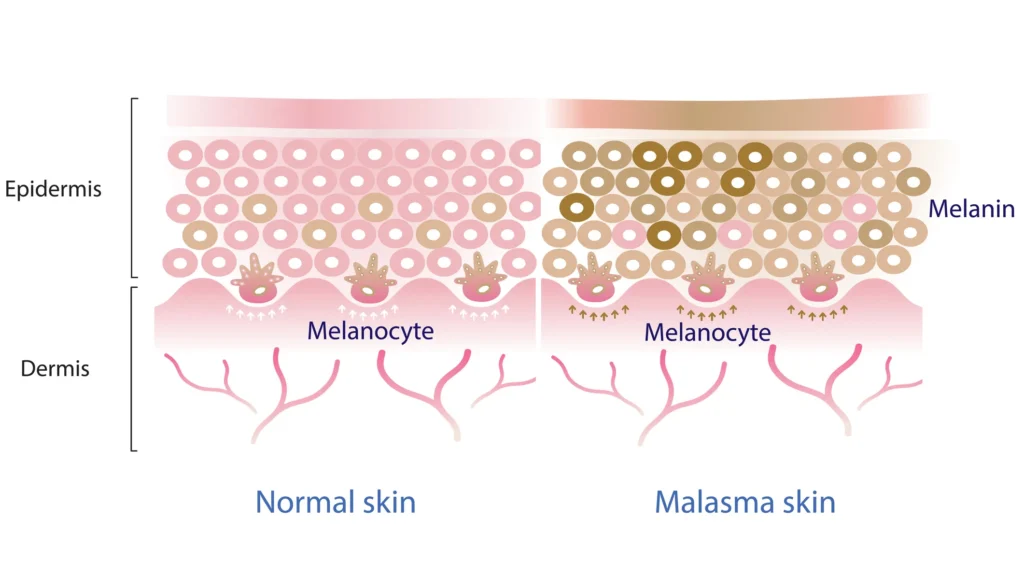
The cause of melasma is complex; it has been proposed to be a photoaging disorder in genetically predisposed individuals. The pigmentation ultimately results from the overproduction of melanin by melanocytes (pigment cells); either taken up by keratinocytes (epidermal melanosis) and/or deposited in the dermis (dermal melanosis, melanophages).
Factors implicated in the development of melasma include:
- Family history — about 2/3 of patients report affected family members
- Sun and heat exposure — ultraviolet and visible light promote melanin production
- Hormonal changes — pregnancy and the use of estrogen/progesterone-containing oral contraceptives, intrauterine devices, implants, and hormone replacement therapy, are implicated in 1/4 of affected women; thyroid disorders (especially hypothyroidism) can be associated with melasma
- Medications – new targeted therapies for cancer and antiepileptic medications
- Scented products — perfumed soaps, toiletries, and cosmetics may cause a phototoxic reaction to trigger melasma
FAQs Melasma
Signs and Symptoms
Tan, evenly pigmented macules and/or patches of the face and less commonly the forearms. The patches are usually symmetric and may have a “moth-eaten” appearance to their borders.
Impact of skin color on clinical presentation: In darker skin colors, melasma will appear any shade of brown, including dark brown. In lighter skin colors, melasma may appear any shade of light or mid-brown.
Sites of involvement include centrofacial (cheeks, forehead, superior lip, nose), malar (cheeks and nose), and mandibular (mandibular ramus). The upper lip can also be involved, especially in melasma secondary to oral contraceptive use.
Diagnosis
Currently, there is no specific test that can determine whether a person has melasma. Instead, the doctor makes a diagnosis of melasma using the following methods:
- Physical exam – involves examination of the skin to look for pigment deposition; usually epidermal and, therefore, markedly accentuated with a Wood’s lamp. Dermal melasma is not accentuated by Wood’s lamp examination.
- Medical history evaluation – includes asking questions about elements of history supporting melasma diagnosis include positive family history and onset following pregnancy or oral contraceptives
Melasma is usually restricted to sun-exposed skin.
Treatments
The biggest concerns with melasma is the psychosocial distress that the condition brings which can impact emotional well-being. Treatment often consists of a personalized skin management plan tailored for each patient. Some of the treatment options include:
- Limiting sun and heat exposure
- Laser therapy (HALO, MOXI and ClearSilk)
- Light therapy (BBL HERO)
- Chemical peels (glycolic acid, trichloroacetic acid and salicylic acid)
- Microdermabrasion
- Topical medications (hydroquinone, corticosteroids, retinoids, retinol, azelaic acid, kojic acid and glycolic acid)
- Oral medication (tranexamic acid)
Light and Laser Therapy Melasma


Five days post treatments
Courtesy of Cameran Nguyen, DO
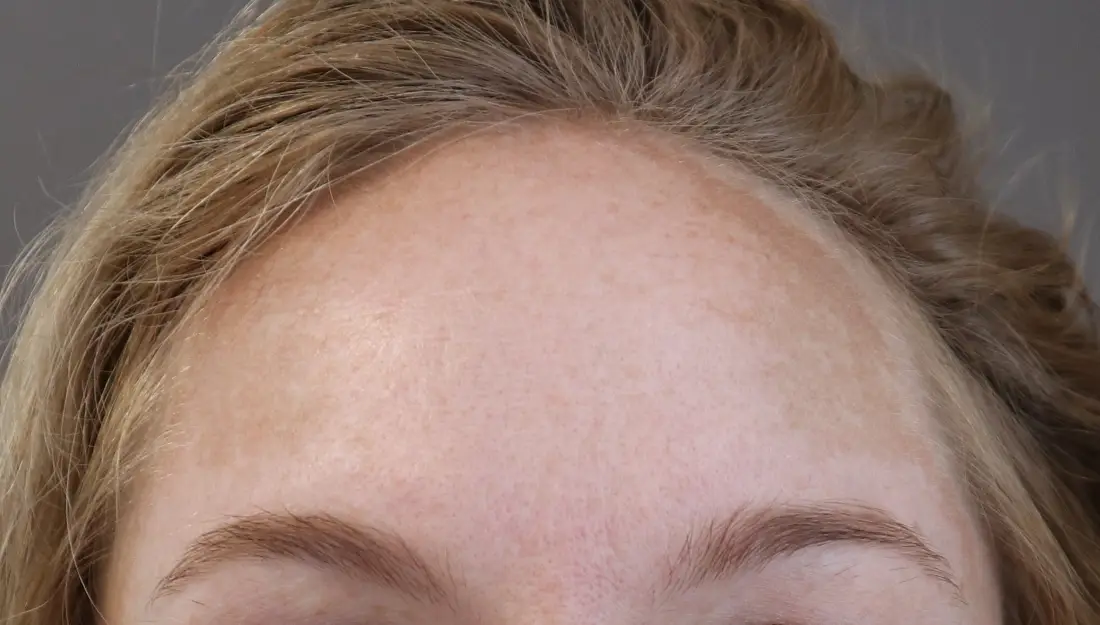
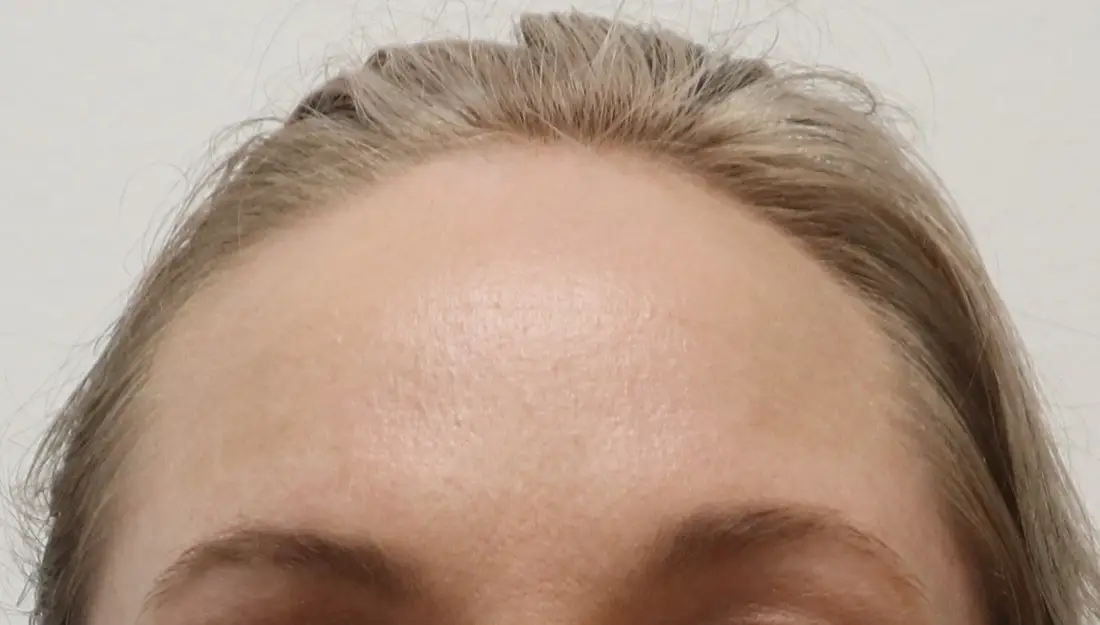
Eight months post one treatment
Courtesy of Cameran Nguyen, DO
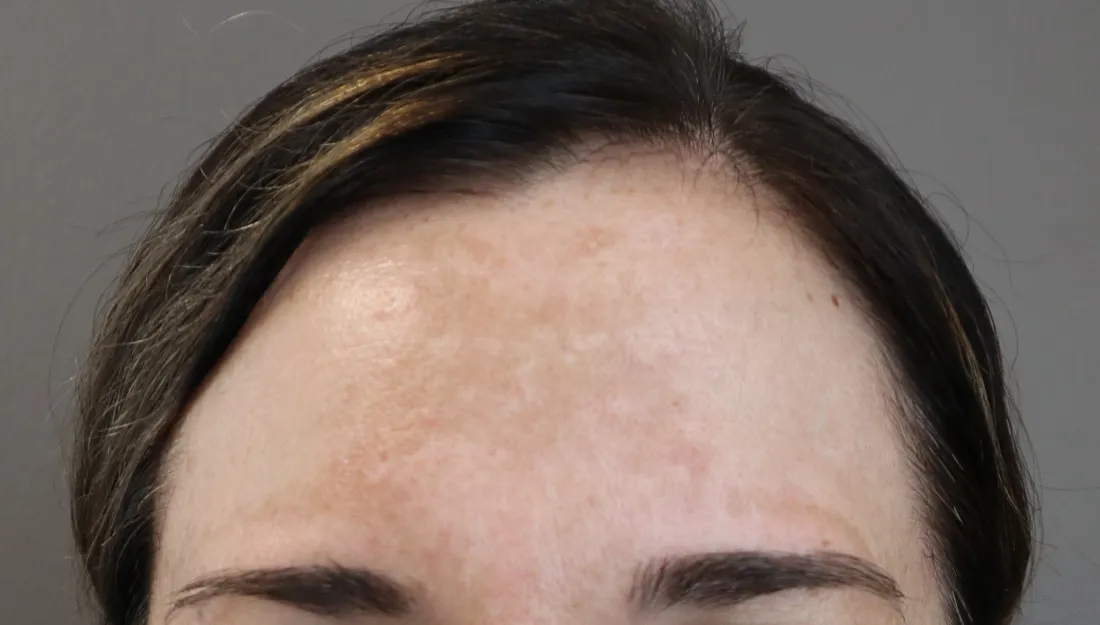
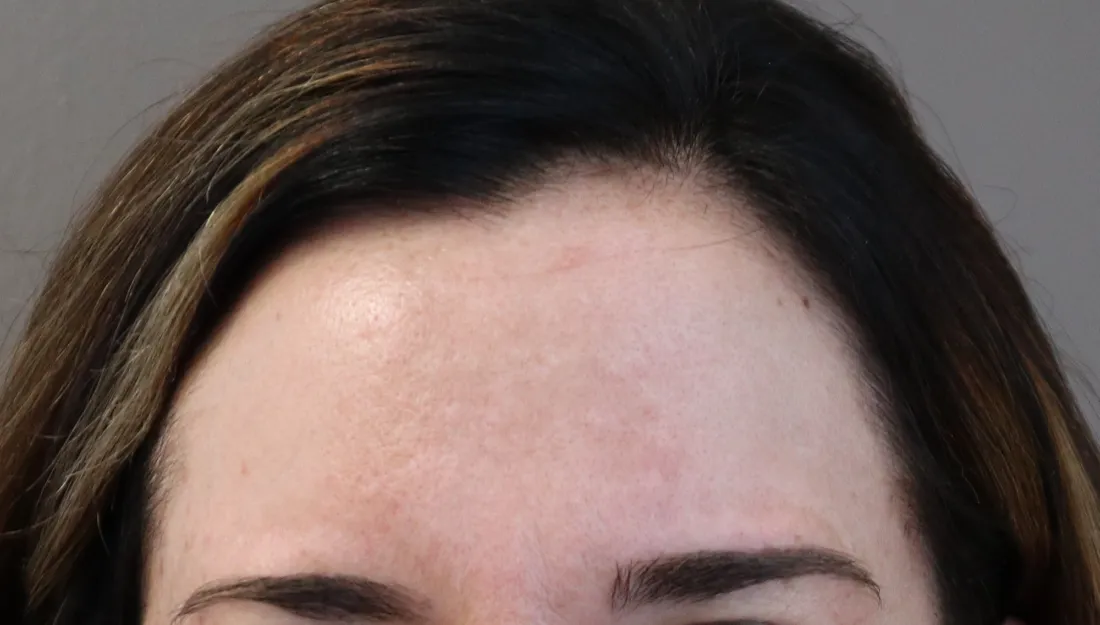
One month post one treatment
Courtesy of Cameran Nguyen, DO
Schedule an Appointment
If you are suffering from melasma, visit Aspire Skin Health for the best treatment options. Our clinic provides compassionate and personalized medical care using cutting-edge treatments. Call us today at 817-482-0000 or fill out an appointment request form.
For other medical conditions, please visit the main page for Medical Services.
For more information on melasma, please visit the American Academy of Dermatology website https://www.aad.org/public/diseases/a-z/melasma-treatment.
